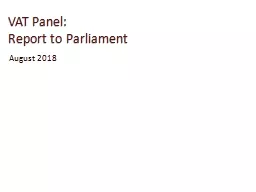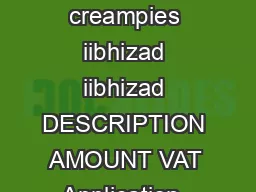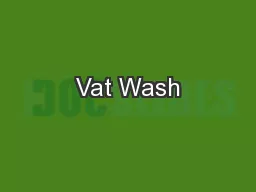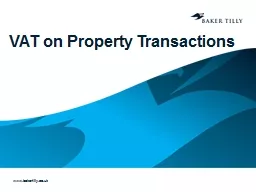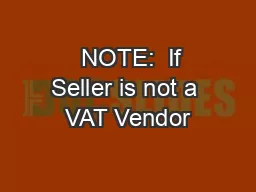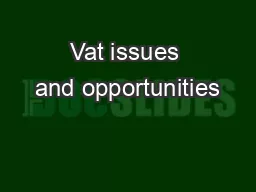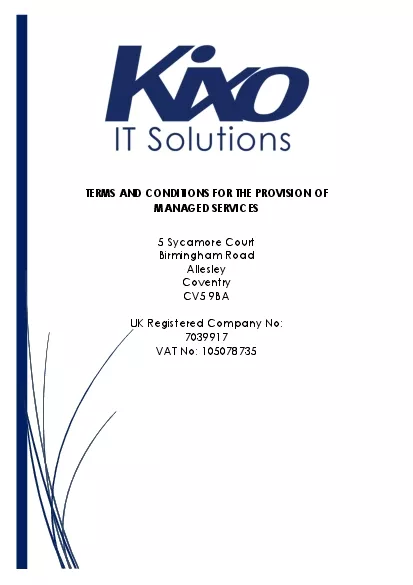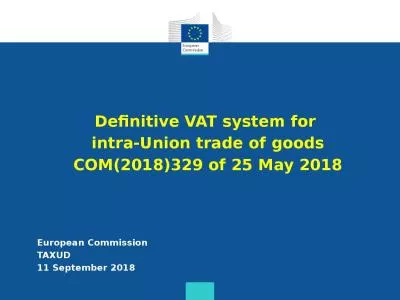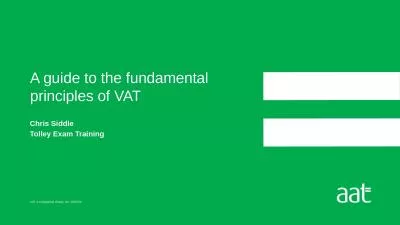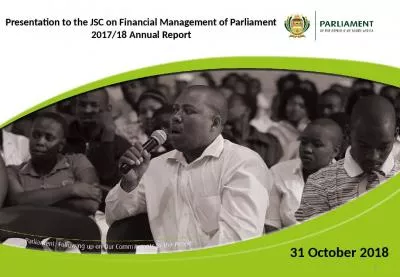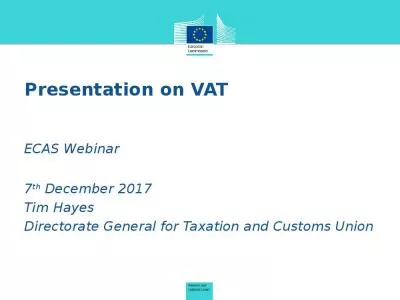PPT-VAT Panel: Report to Parliament
Author : tabitha | Published Date : 2021-01-28
August 2018 Mandate and process Panel established to consider how to mitigate the impact of the increase in VAT from 14 to 15 in the 20189 budget Terms of reference
Presentation Embed Code
Download Presentation
Download Presentation The PPT/PDF document "VAT Panel: Report to Parliament" is the property of its rightful owner. Permission is granted to download and print the materials on this website for personal, non-commercial use only, and to display it on your personal computer provided you do not modify the materials and that you retain all copyright notices contained in the materials. By downloading content from our website, you accept the terms of this agreement.
VAT Panel: Report to Parliament: Transcript
Download Rules Of Document
"VAT Panel: Report to Parliament"The content belongs to its owner. You may download and print it for personal use, without modification, and keep all copyright notices. By downloading, you agree to these terms.
Related Documents

